The Bridgestone Ecopia tire has been on the receiving end of a fair amount of press over the last few years seeing as how it was the tire of choice for the Nissan LEAF EV, but given what I experienced during my brief visit to the company’s Aiken, SC PSR plant, I think it deserves a little more.
The thing with tires is, in a nutshell, they need to provide a car and its driver performance which translates into grip on wet or dry, and all other forms of handling. In order to achieve this, a tire must adhere to a given surface. Adherence is attained through rubber compounds sticking to these surfaces. By the same token, this phenomenon creates rolling resistance. Rolling resistance is one of the biggest issues that effects fuel economy.
How’s that for a conundrum?
Bridgestone is tackling this head-on with their line of Ecopia tires that not only addresses energy-consuming rolling resistance, but also integrates a large number of environmentally sustainable and sound measures. One such example is that each Ecopia tire is made with 5% post consumer rubber in the tread rubber.
What’s interesting about the Ecopia tire is what it manages to do.
Perhaps the most interesting element is the fuel-saver sidewall which returns energy to the tire. This helps lower rolling resistance. Picture it like this: Take a rubber bouncy ball; when thrown against a surface, it bounces back. That’s energy returning to the ball. The Ecopia’s sidewalls, as they deform against the road, somewhat “bounce back” into shape and push the tire forward.
Other key innovations on the Ecopia tire include the use of silica in the compound which improves wet traction by increasing the tread’s flexibility. You may have heard of this, as it's used in winter tires for the exact reasons described here.
The key point is the introduction of NanoPro-Tech technology which, as the name suggests, improves rolling resistance and fuel efficiency on a molecular level. This is not science fiction, and it all works.
To demonstrate how the Ecopia tire can go farther with the same amount of energy, the Bridgestone crew set us up with trikes shod with Ecopia tires on some and regular Insignia tires on others. The point behind the exercise was to demonstrate the higher rolling efficiency of the Ecopia with equal amounts of energy.
The demonstration worked big time. I managed a record-setting (for the day) 70-foot distance on the Ecopias while I could do no better than 46 feet on the Insignias. This difference does translate into considerable savings in the real world.
Available for both cars and minivans/crossovers, the use of Ecopia EP422 (car) tires can result in an approximate 5% better fuel economy when compared to a conventional Bridgestone tire. The Dueler H/L 422 does one better by potentially improving gas mileage by up to 6%. Over a period of four years, the savings in fuel costs nearly cover the price of the average set of Ecopia tires.
Bridgestone is working on spreading Ecopia technology throughout its entire line of tires, and in time could find its way into winter tires. Given the climate in which we Canadians live, and the continuously rising cost of energy, this is good news!
Bridgestone Ecopia tires are currently available in nearly 50 different sizes, and are covered by a 65,000 mile (104,000 km) warranty.
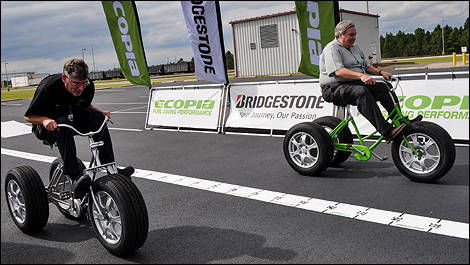 |
| Photo: Mathieu St-Pierre |
The thing with tires is, in a nutshell, they need to provide a car and its driver performance which translates into grip on wet or dry, and all other forms of handling. In order to achieve this, a tire must adhere to a given surface. Adherence is attained through rubber compounds sticking to these surfaces. By the same token, this phenomenon creates rolling resistance. Rolling resistance is one of the biggest issues that effects fuel economy.
How’s that for a conundrum?
Bridgestone is tackling this head-on with their line of Ecopia tires that not only addresses energy-consuming rolling resistance, but also integrates a large number of environmentally sustainable and sound measures. One such example is that each Ecopia tire is made with 5% post consumer rubber in the tread rubber.
What’s interesting about the Ecopia tire is what it manages to do.
Perhaps the most interesting element is the fuel-saver sidewall which returns energy to the tire. This helps lower rolling resistance. Picture it like this: Take a rubber bouncy ball; when thrown against a surface, it bounces back. That’s energy returning to the ball. The Ecopia’s sidewalls, as they deform against the road, somewhat “bounce back” into shape and push the tire forward.
Other key innovations on the Ecopia tire include the use of silica in the compound which improves wet traction by increasing the tread’s flexibility. You may have heard of this, as it's used in winter tires for the exact reasons described here.
The key point is the introduction of NanoPro-Tech technology which, as the name suggests, improves rolling resistance and fuel efficiency on a molecular level. This is not science fiction, and it all works.
To demonstrate how the Ecopia tire can go farther with the same amount of energy, the Bridgestone crew set us up with trikes shod with Ecopia tires on some and regular Insignia tires on others. The point behind the exercise was to demonstrate the higher rolling efficiency of the Ecopia with equal amounts of energy.
The demonstration worked big time. I managed a record-setting (for the day) 70-foot distance on the Ecopias while I could do no better than 46 feet on the Insignias. This difference does translate into considerable savings in the real world.
Available for both cars and minivans/crossovers, the use of Ecopia EP422 (car) tires can result in an approximate 5% better fuel economy when compared to a conventional Bridgestone tire. The Dueler H/L 422 does one better by potentially improving gas mileage by up to 6%. Over a period of four years, the savings in fuel costs nearly cover the price of the average set of Ecopia tires.
Bridgestone is working on spreading Ecopia technology throughout its entire line of tires, and in time could find its way into winter tires. Given the climate in which we Canadians live, and the continuously rising cost of energy, this is good news!
Bridgestone Ecopia tires are currently available in nearly 50 different sizes, and are covered by a 65,000 mile (104,000 km) warranty.
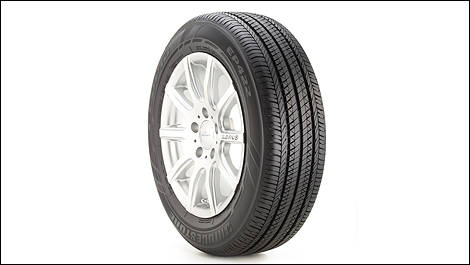 |
| Photo: Bridgestone |
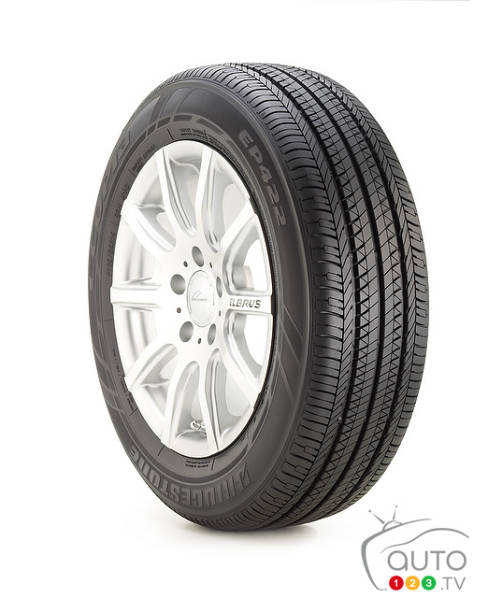
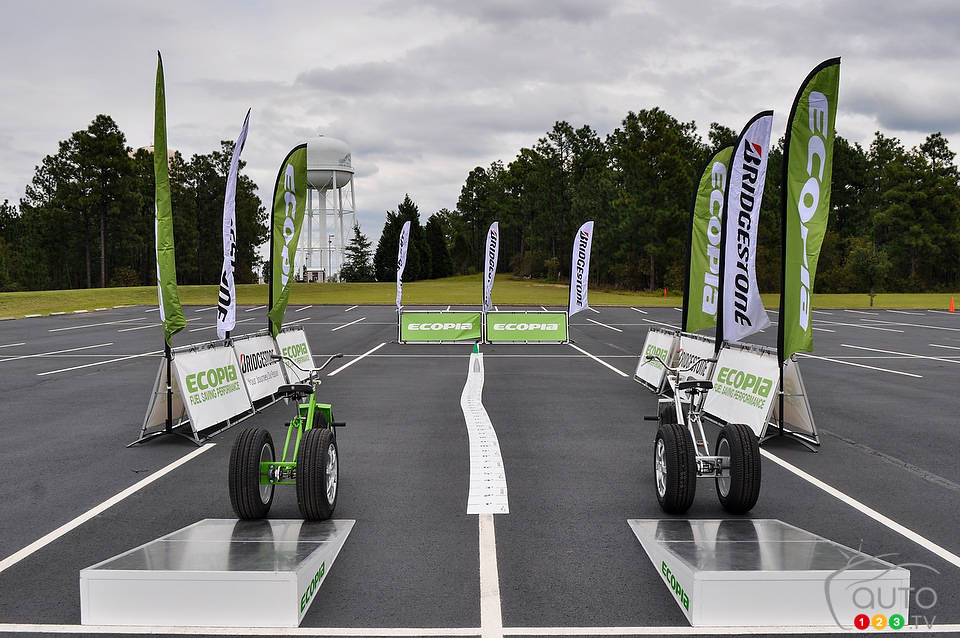
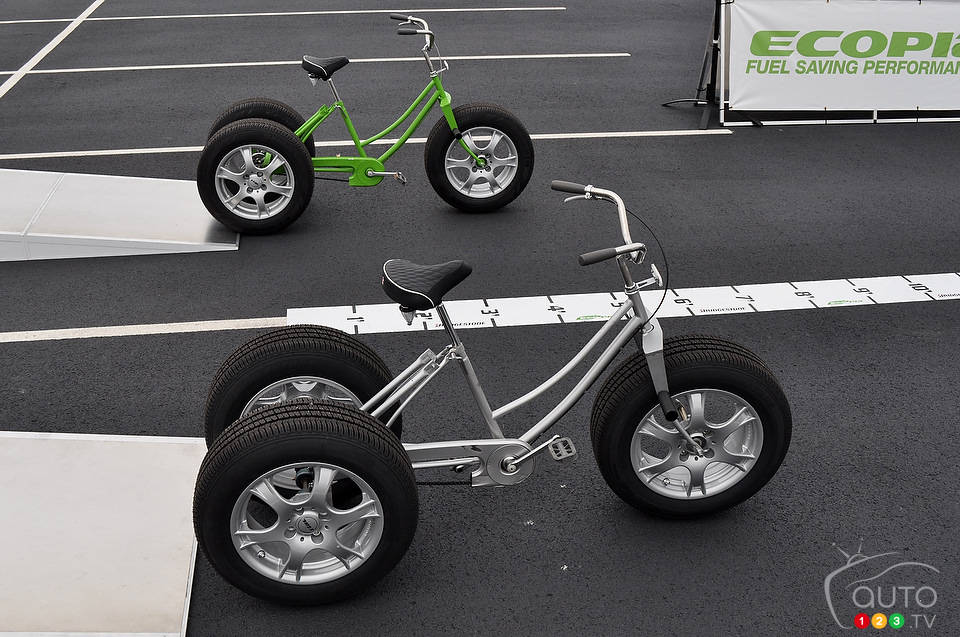
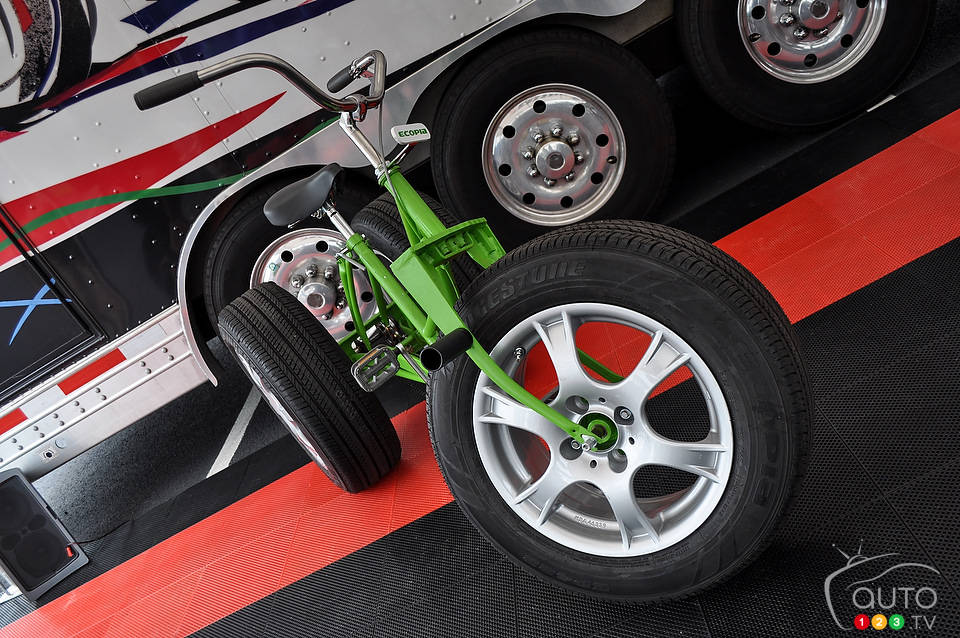
Article Gallery


